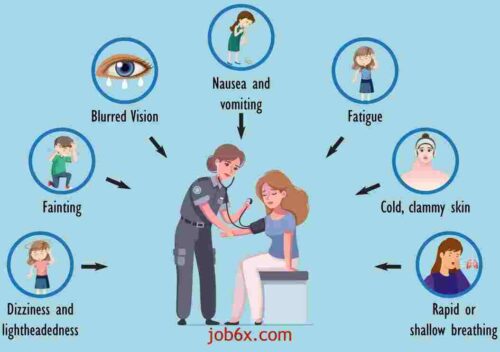Understanding Low Blood Pressure
Blood pressure is the force that blood pressure exerts on the walls of your arteries. It is recorded as two numbers: systolic (pressure during a heartbeat) and diastolic (pressure between heartbeats). While high blood pressure (hypertension) is widely considered a health risk, low blood pressure – also known as hypotension – can be just as dangerous if it is severe or persistent.
What is low blood pressure?
Generally, a reading of 90/60 mm Hg or less is considered hypotension. However, what is “low” for one person may be normal for another. Some people have naturally low blood pressure without symptoms, which is harmless. Problems arise when blood flow to vital organs such as the brain, heart and kidneys is inadequate.
Types of low blood pressure
Orthostatic (positional) hypotension
This occurs when blood pressure suddenly drops when you stand up from a sitting or lying position. This can cause dizziness or fainting and is more common in older adults.
Postprandial hypotension
A drop in blood pressure after eating, usually within 1-2 hours of eating. The elderly and people with autonomic nervous system disorders are more susceptible.
Neurologically mediated hypotension (NMH)
A sudden drop in blood pressure after prolonged standing, often seen in children and young adults.
Severe hypotension associated with shock
Extremely low blood pressure caused by severe infection (septic shock), excessive blood loss, heart attack, or an allergic reaction (anaphylaxis). This is a medical emergency.
Causes of low blood pressure
Low blood pressure can be caused by several factors:
Dehydration: Loss of water and electrolytes through sweating, diarrhea, or vomiting reduces blood volume.
Cardiovascular problems: Bradycardia (slow heart rate), heart valve disease, or heart failure can lower blood pressure.
Endocrine problems: Hormonal imbalances such as adrenal insufficiency (Addison’s disease), hypothyroidism, or complications related to diabetes.
Anemia: Injury or internal bleeding reduces circulating blood volume.
Medications: Diuretics, beta-blockers, antidepressants, and Parkinson’s disease medications can cause hypotension.
Sepsis or allergies: Both can cause dangerously low blood pressure.
Symptoms of low blood pressure
The severity of symptoms depends on how quickly your blood pressure drops. Common symptoms include:
Dizziness or lightheadedness
Fainting (syncope)
Blurred or blurred vision
Nausea
Fatigue or weakness
Rapid, shallow breathing
Cold, clammy skin
Confusion, especially in the elderly
When severe hypotension occurs, vital organs do not get enough oxygen, which can be fatal.
Complications
Untreated or severe hypotension can lead to:
Shock: The most dangerous outcome, which can lead to organ failure.
Falls and Injuries: Dizziness and fainting can lead to broken bones or head injuries.
Erectile dysfunction: Prolonged low blood flow can damage the kidneys, heart, and brain.
Diagnosis
A healthcare provider will periodically monitor your blood pressure, review your symptoms, and order tests to determine the underlying cause. These may include:
Read More: IVF Treatment
Blood tests to check for anemia, hormones, or infection.
Electrocardiogram (ECG) or ultrasound to assess heart function.
Tabletop tests for postural hypotension.
Treatment and Management
Treatment depends on the underlying cause and the severity of symptoms. General strategies include:
Lifestyle changes
Increase fluid intake, especially in hot weather or during illness.
Increase salt intake under medical supervision.
Avoid sudden changes in posture.
Wear compression stockings to improve blood flow.
Medication changes
If a prescribed medication is causing hypotension, your doctor may adjust the dosage or change the medication.
Treating underlying conditions
Addressing hormonal imbalances, heart problems, or infections can stabilize blood pressure.
Emergency
In severe cases—especially in shock—intravenous fluids, blood pressure-raising medications (vasopressors), and treatment of the underlying cause are necessary.
Preventing low blood pressure
While not all causes of hypotension can be prevented, some steps can help reduce your risk:
Drink fluids throughout the day.
Eat small, frequent meals to avoid postural drops.
Limit alcohol consumption.
Get up slowly from sitting or lying down.
If you are at risk, check your blood pressure regularly.
When to see a doctor.
Seek immediate medical attention if you experience the following:
Persistent dizziness or fainting
Confusion or difficulty concentrating
Chest pain or shortness of breath
Signs of shock (cold skin, rapid pulse, shallow breathing)
#lowbloodpressurehypotension #lowbloodpressurehypotensionjob6x #job6xlowbloodpressurehypotension #lowbloodpressurejob6x #job6xlowbloodpressure #job6xhypotension #hypotensionjob6x
